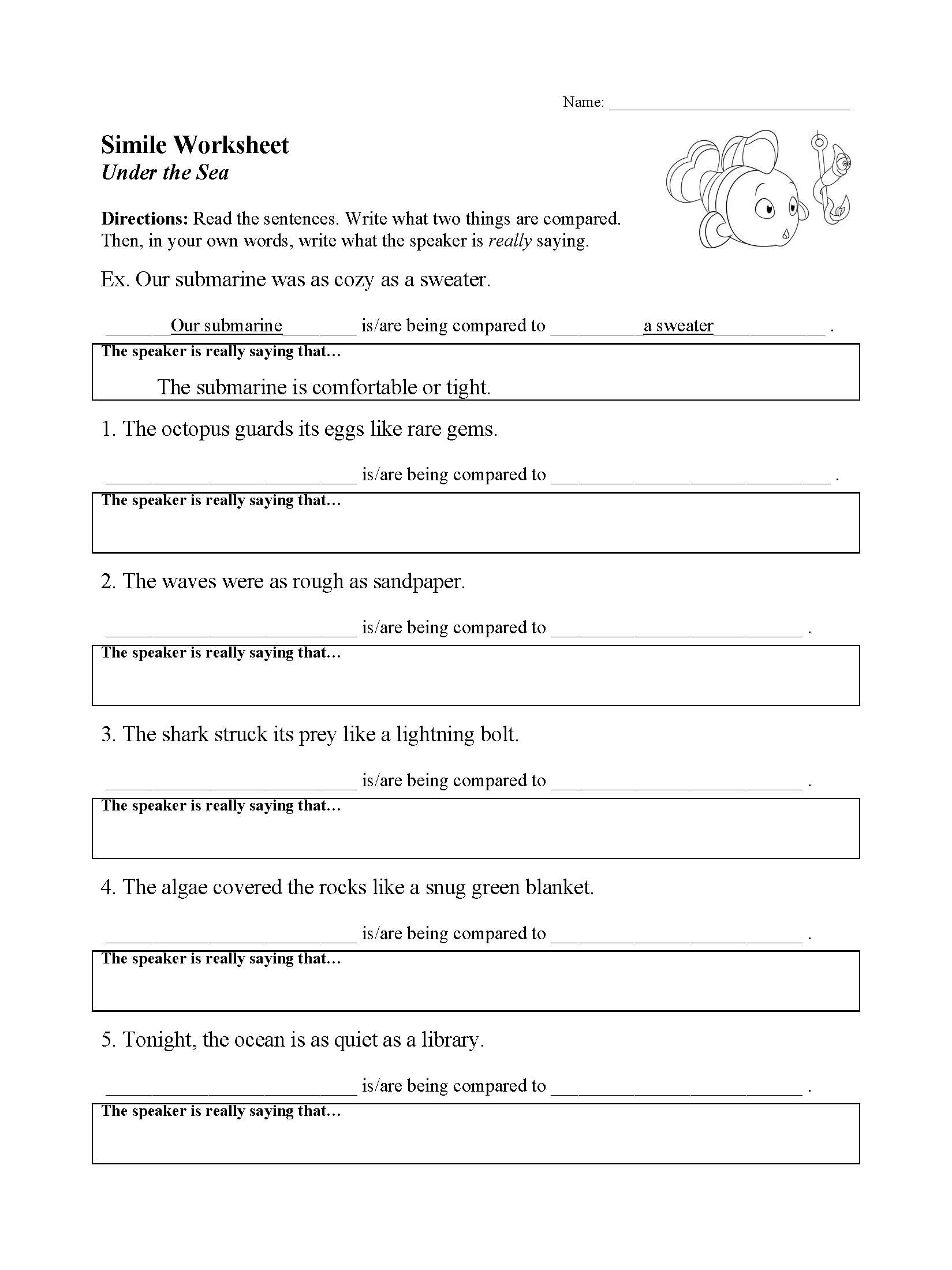Figurative Language Worksheets
Figurative language can be a lot of fun. It can be really challenging too. Figurative language makes readers "figure" out what is being said. It isn't always obvious. It definitely isn't literal. Here is an example.
My mind is a blank slate.
The speaker's mind is compared to a blank slate. It isn't really a blank slate, not a literal blank slate at least. Rather, the speaker means that he or she is open to new ideas. He or she is using a metaphor. In order to understand this, we have to make a connection. Readers must go a step further to understand figurative language.
We have worksheets that cover the following figurative language techniques:
- Simile Worksheet
- Metaphor Worksheet
- Personification Worksheet
- Hyperbole Worksheet
- Understatement Worksheet
Check out this page for literary techniques like alliteration, allusion, consonance, foreshadowing and more.








